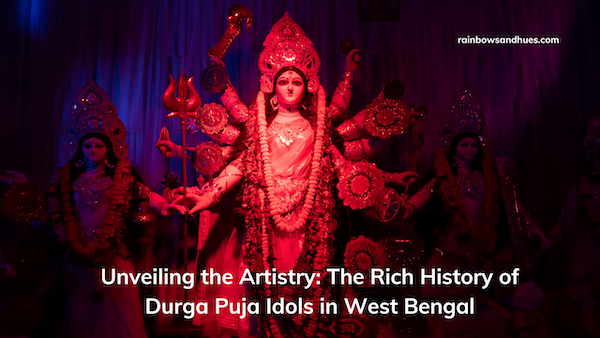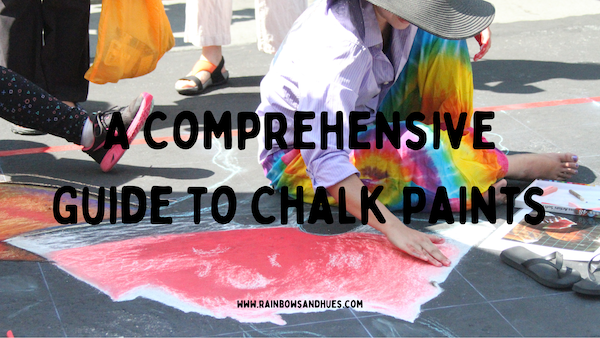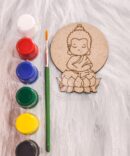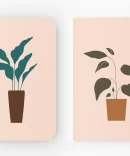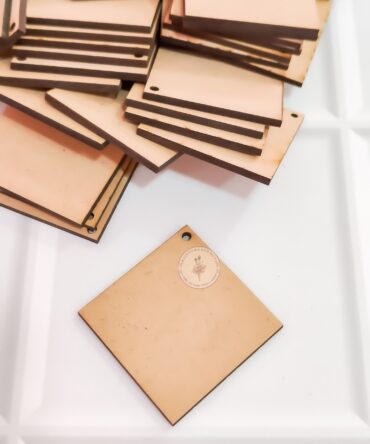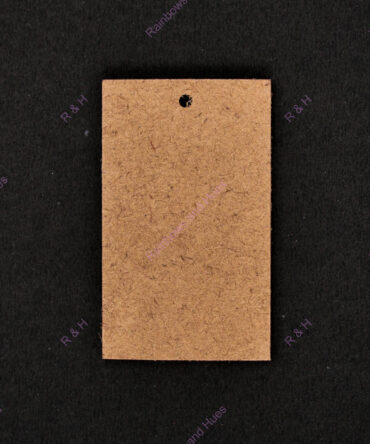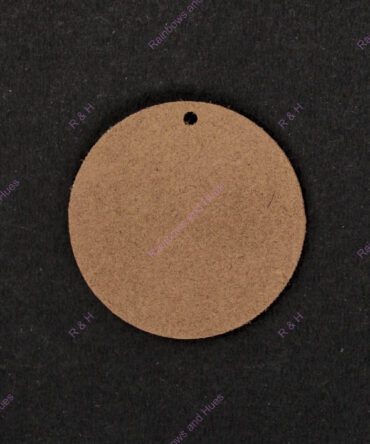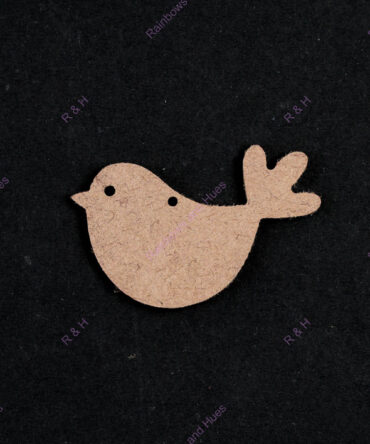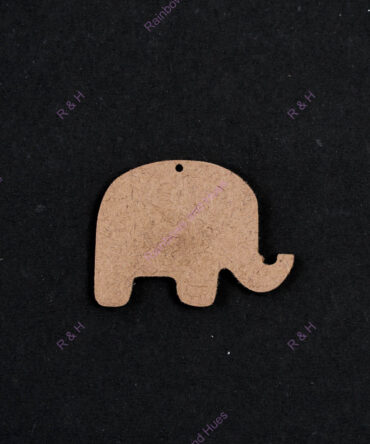Durga Puja, the grand festival of Bengal, is celebrated with unparalleled enthusiasm and splendour. One of the central aspects of this celebration is the creation of intricate and magnificent idols of Goddess Durga, which stand as a testament to the rich artistic heritage of the region. In this blog post, we delve into the fascinating history of Durga Puja idols in West Bengal.
Dating back to 1610, the Sabarna Roy Choudhury family has a long-standing tradition of hosting the Durga Puja celebration at their ancestral home in Barisha, Kolkata. This event is believed to be one of Kolkata’s oldest Durga Puja festivals. In a separate instance, Nabakrishna Dev commenced the Durga Puja festivities at Shobhabazar Rajbari in 1757.
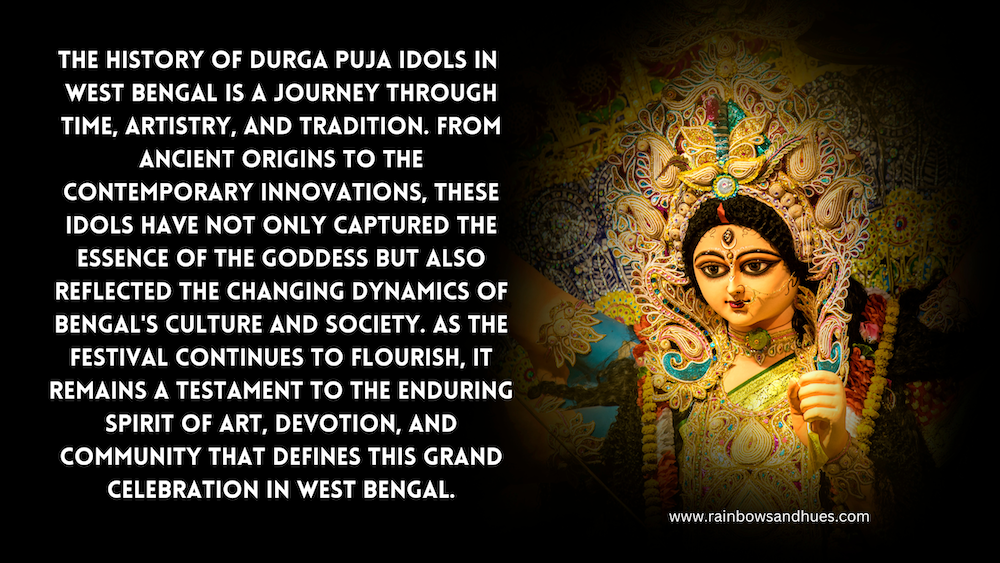
The Tradition of Idol Making
The tradition of making clay idols of Goddess Durga and her divine entourage, including her children Lakshmi, Saraswati, Ganesha, and Kartikeya, began as a way to bring the divine presence into the earthly realm. The idol-making process involves skilled artisans and sculptors who meticulously create the idols using locally sourced clay, straw, and bamboo.
The idol-making process is not just a matter of craftsmanship; it is considered a sacred art form and a form of devotion. The artisans who craft these idols are known as “kumars” or “shilpis,” and they often inherit this tradition from their ancestors. These artists undergo a rigorous training process to ensure they can create idols that adhere to the prescribed religious and aesthetic standards.
Also Read: Celebrating Navratri: The Elegance of Garba and its Evolution
The idols typically depict Goddess Durga as a ten-armed warrior goddess, riding a lion and slaying the demon Mahishasura. The goddess is depicted in a majestic form, adorned with intricate jewelry and dressed in vibrant clothing. The artistic expressions and styles of these idols may vary from region to region, reflecting the local cultural influences and artistic sensibilities.
Once the idols are crafted and painted, they are consecrated with sacred rituals, and the Durga Puja festival begins. Devotees worship these idols with great fervor and devotion, seeking the blessings of Goddess Durga for prosperity, protection, and the triumph of good over evil.
Ancient Origins
The concept of creating and worshipping idols of deities has ancient roots in Hinduism, dating back thousands of years. However, the specific tradition of crafting elaborate clay idols for Durga Puja can be attributed to the medieval period, around the 16th or 17th century.
One of the earliest references to Durga Puja can be found in the Devi Mahatmya, a sacred text that describes the legend of Goddess Durga defeating the demon Mahishasura. This mythological tale is central to the Durga Puja festival and symbolizes the victory of good over evil, light over darkness, and knowledge over ignorance. Over time, this story became a focal point for the festival’s rituals and celebrations.
Medieval Era
During the medieval period, the worship of Goddess Durga gained more prominence in Bengal. Historical accounts from the 16th century describe the grand celebrations of Durga Puja in various forms. However, it was not until the 17th century that the clay idol-making tradition began to take its recognizable shape.
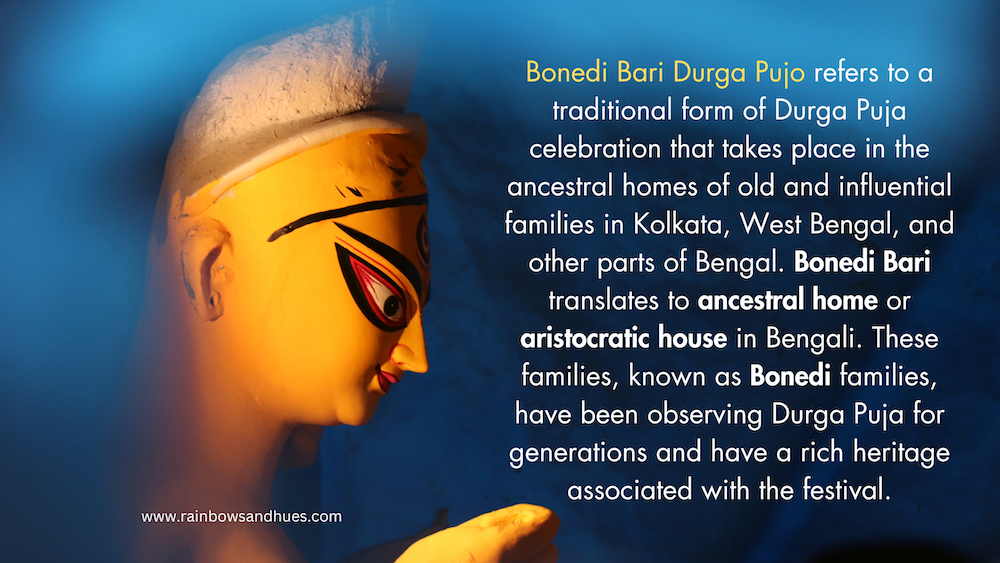
The Renaissance Period
The late 18th and early 19th centuries marked a significant turning point in the history of Durga Puja idols. This era, known as the Bengal Renaissance, witnessed a revival of art, culture, and literature. Prominent artists like Raja Ravi Varma played a crucial role in shaping the artistic representation of the goddess.
Introduction of Eco-Friendly Idols
In recent decades, there has been a growing awareness of environmental issues. This concern led to introduction of eco-friendly Durga Puja idols made from biodegradable materials like clay and straw. This shift not only addresses environmental concerns but also brings a return to traditional craftsmanship and the roots of idol-making.
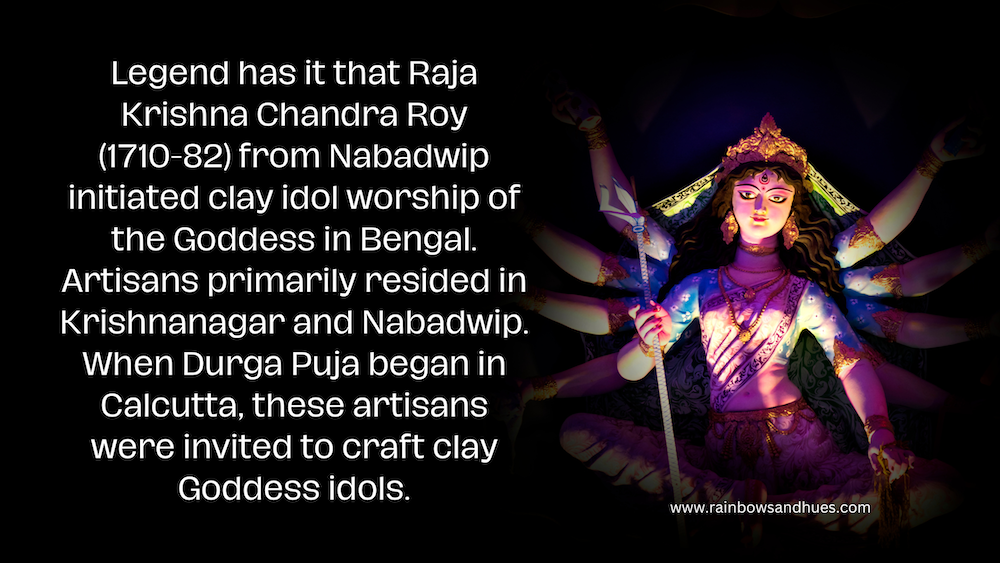
Contemporary Trends
Today, Durga Puja idols in West Bengal showcase an astonishing blend of tradition and innovation. Artisans and sculptors push the boundaries of creativity, experimenting with various materials and styles while maintaining the essence of the goddess.
Challenges and Innovations
As Durga Puja continues to evolve, it faces various challenges. Rapid urbanization, pollution, and changing demographics pose threats to the traditional ways of idol-making. However, artists and organizers are adapting by incorporating technology, sustainable practices, and innovative designs.
Some unique puja pandals from 2022:
Vincent Van Gogh’s ‘Starry Night’ themed pujo at Bakulbagan Sarbojanin
Tridhara Sammilani
Barisha Club
EC Block, Salt Lake
Bhowanipore, 75 Pally
Also Read: Lippan Art: A Unique Blend of Tradition and Craftsmanship
***
Hop over to our website www.rainbowsandhues.com to buy premium quality paintbrushes and colors! Follow @rainbowsandhues on Instagram to get regular information on new products and deals!

